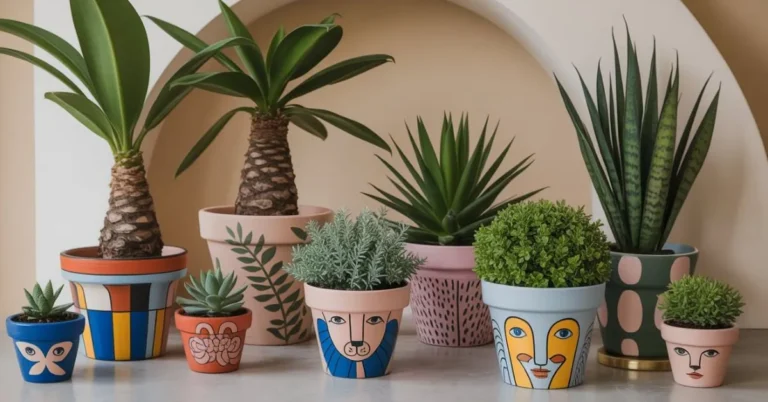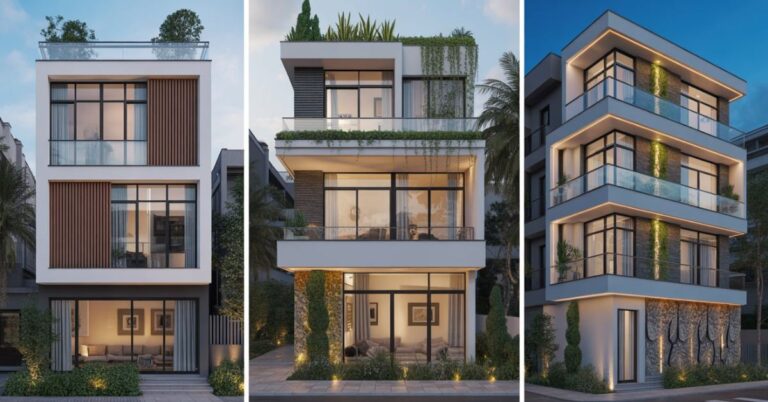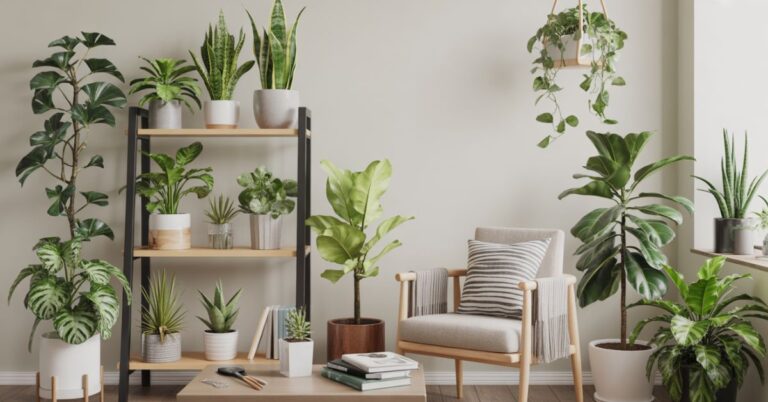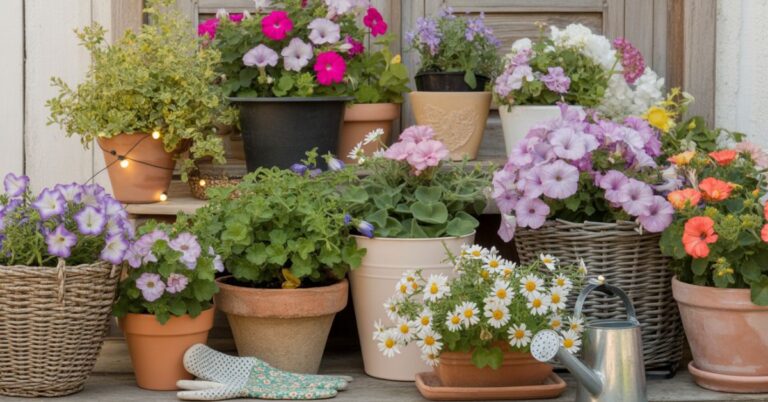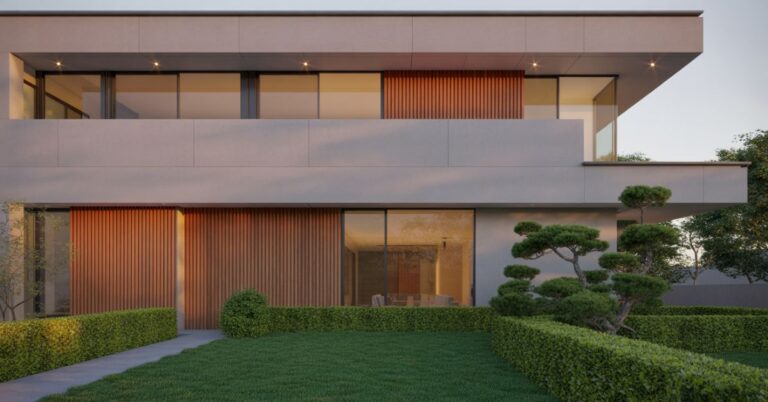25 Best Tall Plants for Low Light Bedrooms
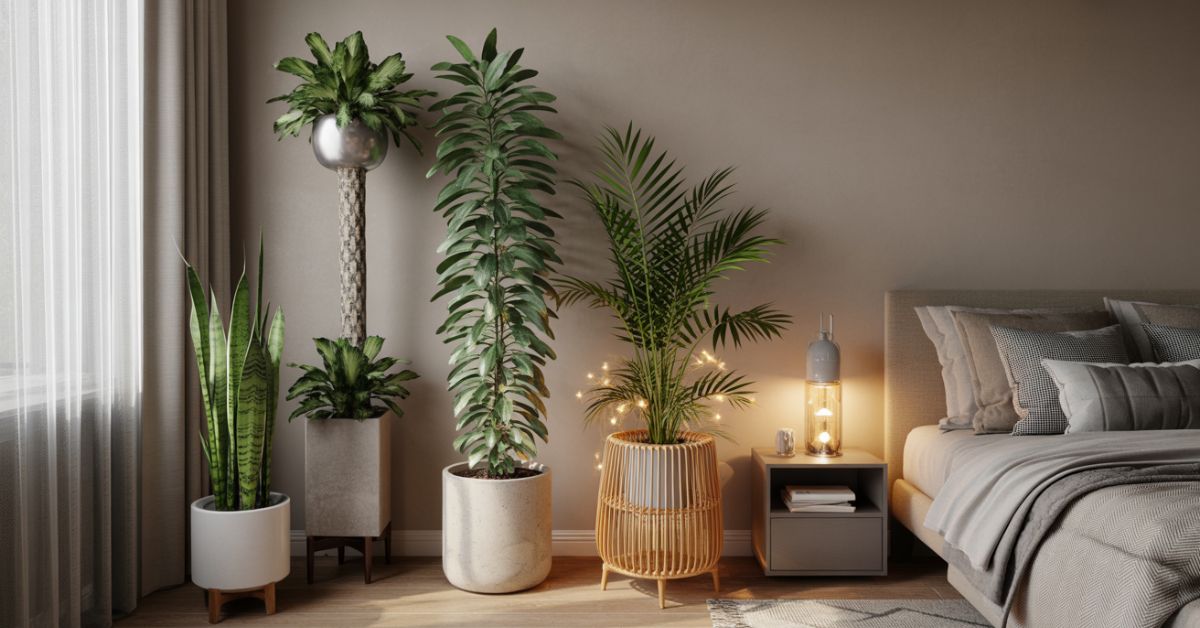
Picture your bedroom: cramped nightstands, cluttered surfaces, and zero floor space for those stunning Tall Plants for Low Light you’ve been admiring on social media, yet you’re still dreaming of creating a dramatic, hotel-worthy sleep sanctuary that makes guests stop and stare. This frustrating cycle affects countless homeowners who believe beautiful bedrooms require either massive spaces or perfect lighting conditions to accommodate impressive plant displays.
The heartbreaking reality hits when you settle for tiny desktop plants that get lost in your bedroom’s proportions, leaving your space feeling incomplete and lacking that sophisticated, spa-like atmosphere you crave. Here’s the life-changing revelation: specific Tall Plants for Low Light varieties are specially designed to thrive in dim bedroom conditions while growing upward instead of outward, creating stunning vertical impact that transforms even the smallest sleeping spaces into magazine-worthy sanctuaries without sacrificing precious floor space or requiring perfect sun exposure.
Why Do Tall Plants Work Better in Bedrooms Than Small Ones?
Vertical space utilization in bedrooms offers tremendous advantages over horizontal arrangements that compete with essential furniture and movement paths. Tall Plants for Low Light draw the eye upward, creating an illusion of height and spaciousness that makes even compact bedrooms feel more expansive and luxurious.
Proportional balance becomes crucial in bedroom design where low furniture like beds, dressers, and nightstands create horizontal emphasis. Floor-standing Tall Plants for Low Light provide the vertical elements needed to balance room proportions while anchoring empty corners that would otherwise feel awkward and unused.
Air purification efficiency increases dramatically with plant height since larger foliage surface areas process more indoor pollutants, and taller plants access different air layers throughout bedroom environments. Stratified air cleaning from floor to ceiling delivers comprehensive purification impossible with small tabletop specimens.
The striking visual impact of Tall Plants for Low Light eliminates the need for multiple smaller plants that create visual clutter and maintenance complexity. A single statement specimen provides maximum aesthetic appeal while simplifying care routines and preserving clean, calming bedroom lines.
Best Tall Low Light House Plants for Bedroom Corners
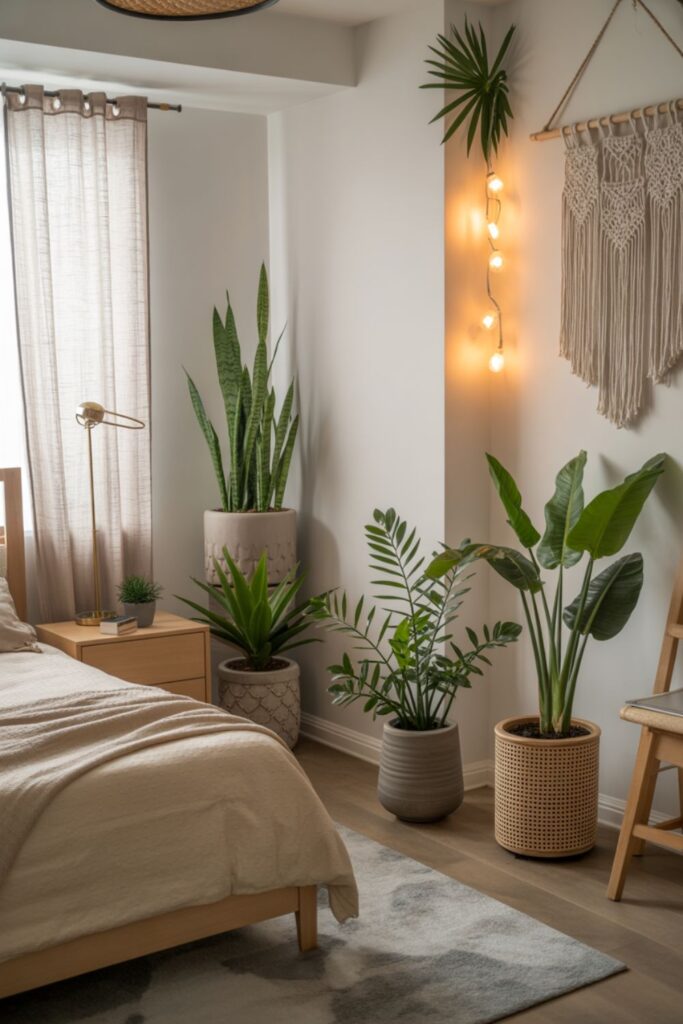
Snake Plant – The Bedroom Skyscraper
Large Snake Plants can reach 4-6 feet tall while maintaining narrow footprints perfect for tight bedroom corners. When it comes to tall house plants that thrive in low light, the Snake Plant (Sansevieria) is an absolute champion. Known for its sleek and architectural appearance, the Snake Plant adds an elegant touch to any indoor space while functioning as a natural air purifier throughout nighttime hours.Sansevieria Laurentii, one of the most popular Tall Plants for Low Light, develops striking yellow-edge variegation that adds sophisticated color without overwhelming bedroom palettes.
Cylindrical Snake Plants, another excellent option in the category of Tall Plants for Low Light, offer unique texture variation with tubular leaves that create modern sculptural elements; perfect for contemporary bedroom design.
Night oxygen production through CAM photosynthesis makes these Tall Plants for Low Light, especially tall Snake Plants, ideal bedside companions that continue air purification while you sleep. Their drought tolerance and neglect resistance suit busy lifestyles where daily plant maintenance isn’t practical, making them a smart and stylish choice for any bedroom sanctuary.
Dracaena Marginata) – The Elegant Bedroom Palm
Also known as the dracaena marginata, these ornamental houseplants have slim candelabra-shaped trunks and spiky leaves with hints of red. Indoors, they’ll grow to about six feet tall, making them striking additions to your greenery collection while thriving in low light bedroom conditions.
Red-edged foliage provides a subtle color accent that complements warm bedroom tones without clashing with existing decor. Multi-trunk specimens create natural tree-like forms that bring organic architecture to geometric bedroom spaces.
Slow growth rates mean Dracaena Marginata maintains manageable sizes for years without overwhelming bedroom proportions. Minimal care requirements include monthly watering and occasional dusting of their narrow leaves.
Read More: 37 Bungalow House Design Modern Ideas for Stylish Single
ZZ Plant (Zamioculcas zamiifolia) – The Indestructible Statement
Air-purifying ZZ Plants are among the most reliable Tall Plants for Low Light, thriving in a wide range of indoor conditions. Their waxy green leaves and large, potato-like rhizomes store water beneath the soil, making them perfect bedroom floor plants that tolerate irregular watering and variable light levels.
The glossy green foliage of these Tall Plants for Low Light reflects available light beautifully, creating a bright, vibrant appearance even in dim bedroom corners. Their architectural branching patterns add striking structural interest that complements modern bedroom furniture and clean design lines.
Thanks to their thick rhizomes, these Tall Plants for Low Light can survive extended neglect, making them ideal for travel-heavy lifestyles or inconsistent care schedules. Their natural pest resistance and disease tolerance ensure long-lasting bedroom beauty with minimal intervention.
How Do You Position Tall Plants in Small Bedrooms?
Corner Optimization Strategies
Bedroom corner utilization transforms unused triangular spaces into dramatic focal points that maximize plant impact without interfering with traffic flow. Corner positioning allows tall plants to spread naturally while maintaining clearance from daily movement patterns.
Light assessment in bedroom corners helps determine optimal placement since corner locations often receive filtered natural light perfect for shade-tolerant tall species. North-facing corners provide consistent gentle illumination ideal for most low light plants.
Wall protection considerations include adequate spacing between plant foliage and wall surfaces to prevent moisture damage and allow air circulation. 18-inch minimum clearance protects paint finishes while supporting healthy plant growth.
Bedside Floor Placement
Bedside floor positioning creates intimate plant relationships that enhance sleep environments while utilizing otherwise empty floor space beside beds and nightstands. Tall Plants for Low Light placed in these bedside locations provide natural privacy screens and soothing green views without needing direct sunlight.
Height considerations are key when styling Tall Plants for Low Light next to the bed—plants between 4–5 feet tall provide ideal proportions that enhance rather than overwhelm the sleeping area, while still allowing bedside lighting and reading activities to remain unobstructed.
Watering access for bedside plants requires thoughtful container selection with adequate drainage and protective saucers to prevent floor damage. Rolling plant caddies are a smart addition, making it easy to move Tall Plants for Low Light for cleaning, maintenance, or repositioning as needed.
Window and Natural Light Areas
Window proximity maximizes available natural light for tall bedroom plants while creating layered arrangements that frame window views. Floor plants positioned 3-4 feet from windows receive optimal indirect light without sun damage risks.
Window treatment coordination ensures plant placement doesn’t interfere with curtain operation or blind functionality. Tall narrow plants work well beside window frames while broader specimens suit window-adjacent corners.
Seasonal light changes affect window-area plant performance as sun angles shift throughout the year. Flexible positioning allows plant relocation to optimize light exposure during different seasons.
What Are the Best Tall Low Light Plants for Different Bedroom Styles?
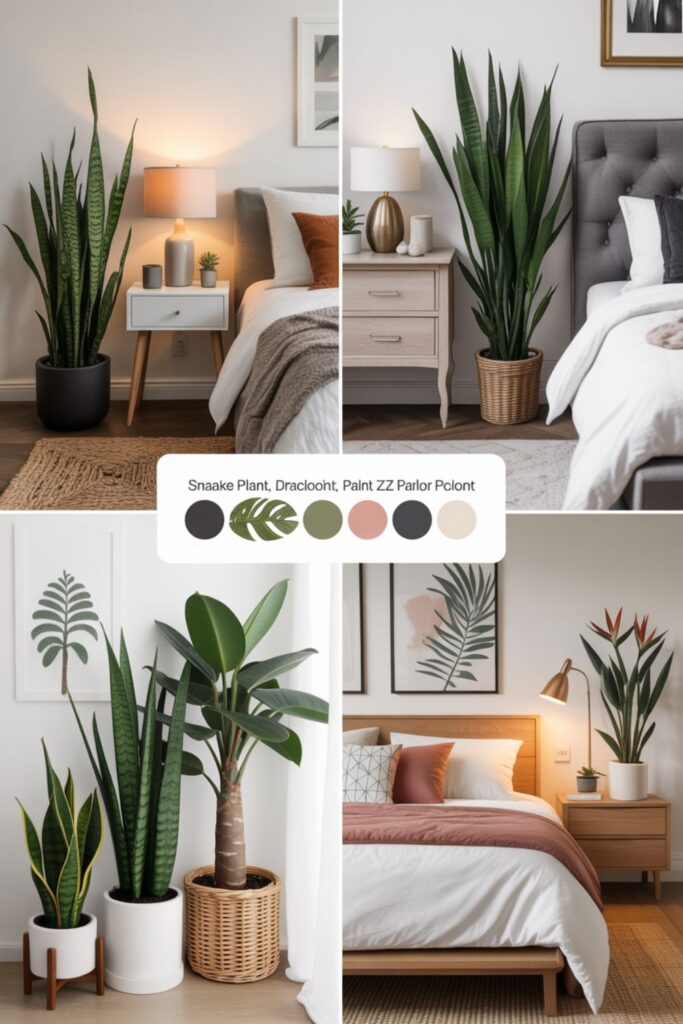
Modern Minimalist Bedrooms
Architectural plant forms complement clean lines and geometric furniture characteristic of modern bedroom design. Single statement specimens provide dramatic focal points without cluttering minimalist aesthetics that prioritize open space and visual calm.
Monochromatic plant selections in deep greens or subtle variegations support neutral color palettes typical of contemporary bedrooms. Sansevieria varieties and ZZ Plants offer sculptural qualities that enhance modern design without competing for attention.
Container coordination using geometric planters in matte finishes or natural materials maintains design coherence while supporting plant health. Floor-standing planters with clean silhouettes integrate seamlessly with modern bedroom furniture.
Bohemian and Eclectic Spaces
Textural variety in Tall Plants for Low Light supports layered bohemian aesthetics that embrace natural elements and organic forms. Dracaena varieties, with their interesting trunk patterns and varied leaf textures, provide visual complexity that perfectly complements eclectic boho décor.
Natural container materials such as woven baskets, ceramic vessels, and wooden planters enhance the charm of Tall Plants for Low Light while providing ample growing space for large root systems. Vintage or handmade containers add authentic character, elevating the overall plant display.
Plant layering pairs Tall Plants for Low Light with hanging plants and smaller accent pieces to create lush, jungle-like environments typical of bohemian bedroom design. Mixing varied plant heights establishes a natural flow and organic arrangement that feels vibrant and effortlessly stylish.
Traditional and Classic Bedrooms
Formal plant arrangements using symmetrical placement and classic container styles complement traditional bedroom furniture and established design principles. Matching pairs of tall plants flanking beds or seating areas create balanced compositions.
Traditional plant varieties like Cast Iron Plants and Parlor Palms evoke historical indoor gardening while adapting to modern bedroom environments. Heritage species provide authentic period character that supports traditional aesthetics.
Elegant containers in classic materials like porcelain, brass, or carved wood maintain traditional styling while supporting plant health. Pedestal stands and decorative cache pots elevate plant presentations to formal design standards.
How Do Tall Plants Impact Bedroom Air Quality and Sleep?
Enhanced Air Circulation
Tall plants create natural air movement through transpiration and thermal effects that improve bedroom ventilation even in closed-door environments. Large leaf surfaces process greater air volumes while plant height accesses different atmospheric layers.
Stratified air cleaning occurs when tall plants filter air masses at multiple room levels, creating comprehensive purification from floor to ceiling. Layered filtration removes pollutants more effectively than single-level cleaning from small plants.
Humidity regulation through increased transpiration from large plant masses maintains optimal moisture levels for comfortable breathing and restful sleep. Natural humidity control prevents dry air problems that disrupt sleep quality.
Maximum Oxygen Production
Large plant biomass in Tall Plants for Low Light produces greater oxygen volumes thanks to their expanded photosynthetic capacity. CAM plants, such as tall Snake Plants, even continue oxygen production during nighttime hours when bedroom air naturally stagnates, making them ideal companions for restful sleep.
Leaf surface area directly correlates with air processing efficiency, which is why Tall Plants for Low Light with abundant foliage are significantly more effective air purifiers than smaller alternatives. Maximizing surface area through vertical height rather than width perfectly suits bedroom spaces with limited floor area.
Continuous air improvement from these large plant specimens maintains consistent air quality throughout sleep cycles without mechanical assistance or energy consumption. With Tall Plants for Low Light, natural air processing works silently and continuously to create a cleaner, healthier bedroom environment.
Stress Reduction Benefits
Biophilic connections with tall plants trigger natural relaxation responses that reduce stress hormones and promote restful sleep. Green environments naturally lower blood pressure and decrease anxiety levels that interfere with sleep quality.
Visual weight from tall plants creates psychological grounding that enhances feelings of security and environmental stability. Substantial plant presence provides natural comfort that supports relaxation and sleep preparation.
Natural privacy created by tall plant screens enhances bedroom intimacy while reducing external stress factors. Living barriers provide psychological separation from daily concerns that interfere with rest.
What Are Common Mistakes When Growing Tall Bedroom Plants?
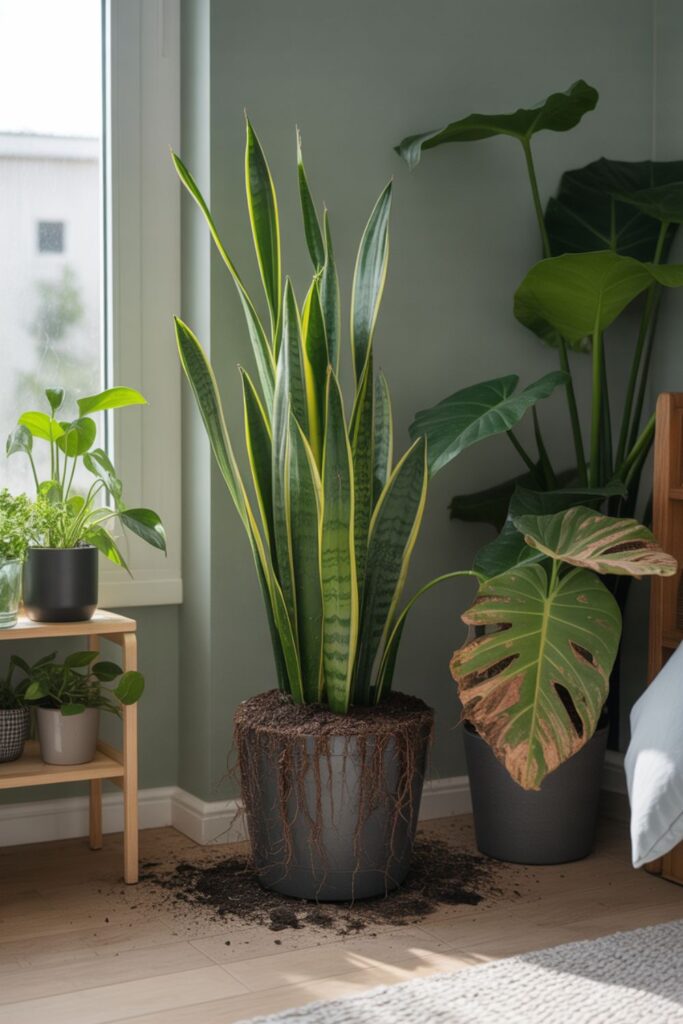
Inadequate Space Planning
Mature size underestimation leads to overcrowded bedrooms when tall plants outgrow their allocated spaces. Growth planning requires understanding final plant dimensions rather than initial nursery sizes to prevent future problems.
Clearance miscalculation around furniture and doorways creates navigation problems and plant damage from accidental contact. Traffic flow assessment ensures plant placement doesn’t interfere with daily routines or emergency egress.
Ceiling height limitations affect plant selection since some species continue growing beyond comfortable room proportions. Species research prevents problems from plants that outgrow bedroom dimensions.
Read More About: Low Light House Plants Bedroom Create Your Perfect Sleep
Overwatering in Low Light
Reduced light conditions slow plant metabolism and water uptake, making overwatering the leading cause of tall plant failure in bedroom environments. Light-appropriate watering requires extended intervals between watering sessions.
Large plant size doesn’t correlate with increased water needs when light levels remain low. Root rot prevention requires understanding that tall plants in dim conditions need less frequent watering than outdoor counterparts.
Soil moisture monitoring through deep testing prevents surface moisture misreading that leads to excessive watering. Drainage improvement through quality potting mixes supports healthy root systems in low light conditions.
Neglecting Support Systems
Structural support becomes crucial as Tall Plants for Low Light grow taller and develop top-heavy proportions. Staking systems and discreet support structures help prevent toppling that could damage both the plant and nearby bedroom furniture.
Container stability is equally important for Tall Plants for Low Light. Choosing weighted planters or stabilizing systems with adequate base width ensures proper balance and prevents tipping risks, especially in high-traffic bedroom areas.
Growth management through strategic pruning and training keeps Tall Plants for Low Light in proportion while encouraging strong, healthy development. Regular maintenance safeguards structural integrity, preventing potential issues before they compromise plant stability or room safety.
Frequently Asked Questions
What are the tallest low light plants suitable for bedrooms?
Snake Plants can reach 6-8 feet tall, Dracaena Marginata grows to 6 feet, and ZZ Plants achieve 4-5 feet in low light bedroom conditions. These hardy plants can grow up to 3 feet tall and live for many years with proper care for Cast Iron Plants, making them excellent tall options for bedroom corners.
How much floor space do tall bedroom plants need?
Most tall low light plants require 18-24 inch diameter floor space with additional clearance from walls and furniture. Snake Plants need minimal footprints while Dracaena and ZZ Plants may spread wider as they mature.
Can tall plants make small bedrooms feel cramped?
Properly positioned tall plants actually make small bedrooms feel larger by drawing eyes upward and creating height illusion. Single tall specimens in corners work better than multiple smaller plants that create visual clutter.
Do tall bedroom plants require more maintenance than small ones?
Tall low light plants often require less frequent care due to established root systems and slower growth rates in dim conditions. Larger plants are generally more resilient and forgiving of irregular care than smaller specimens.
How do I prevent tall plants from falling over in bedrooms?
Use weighted planters, proper staking, and adequate container sizes relative to plant height. Bottom-heavy containers and wall proximity provide additional stability for tall bedroom plants.
What’s the best lighting for tall bedroom plants?
North-facing windows provide ideal indirect light for most tall low light species. Low-light plants do not need a lot of sunlight but require natural light coming in through windows and doors to survive, making bedroom lighting typically sufficient for healthy growth.
Conclusion
Transforming your bedroom into a sophisticated sleep sanctuary with Tall Plants for Low Light creates the perfect balance of dramatic visual impact and peaceful functionality that smaller plants simply cannot achieve. These magnificent vertical specimens thrive in naturally dim conditions while commanding attention through their impressive stature—without requiring precious floor space or direct sunlight. From towering Snake Plants that purify your air throughout the night to elegant Dracaena Marginata specimens that bring tropical sophistication to any corner, there’s a perfect tall, shade-tolerant companion for every bedroom size, style preference, and maintenance level.
The transformative power of Tall Plants for Low Light lies in their ability to create luxurious, hotel-worthy atmospheres that make your private space feel like a premium retreat you’ll never want to leave. Start with proven giants like Snake Plants or ZZ Plants for immediate dramatic impact, then gradually expand your vertical garden with specialized varieties that reflect your personal wellness goals and design aesthetics. Remember that proper corner placement, appropriate watering schedules for low-light conditions, and occasional structural support matter far more than perfect sun exposure. These architectural plant specimens have evolved specifically to create the impressive, health-enhancing environments your bedroom deserves while requiring surprisingly little care to maintain their stunning presence.

